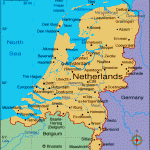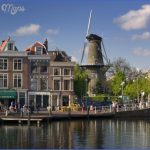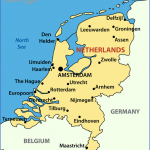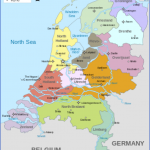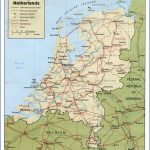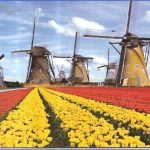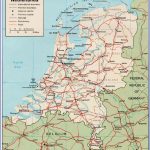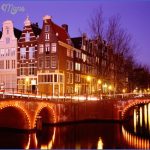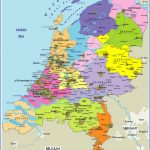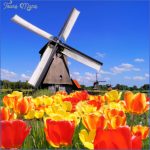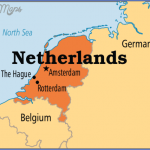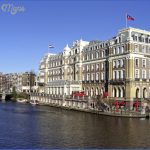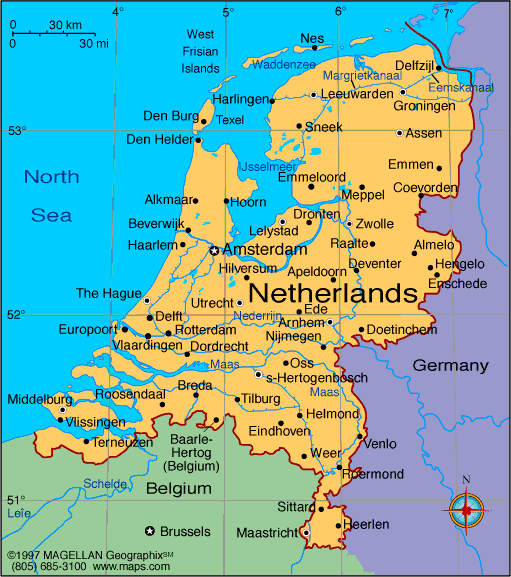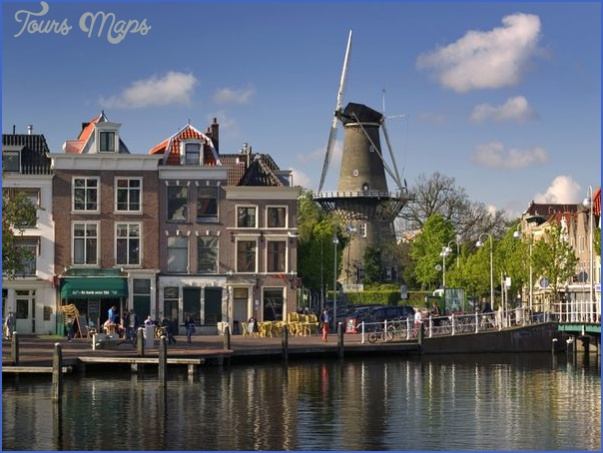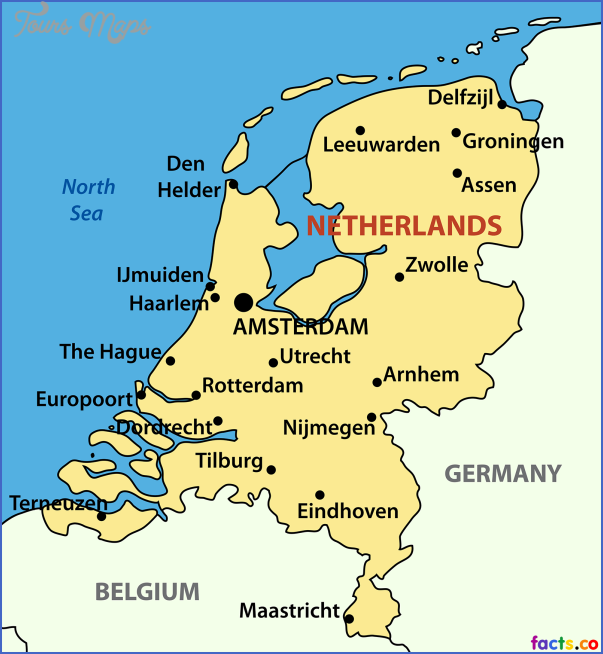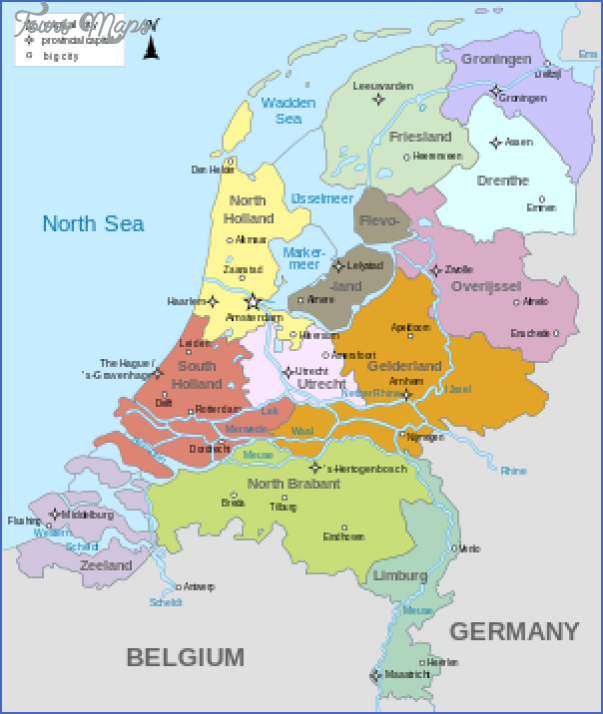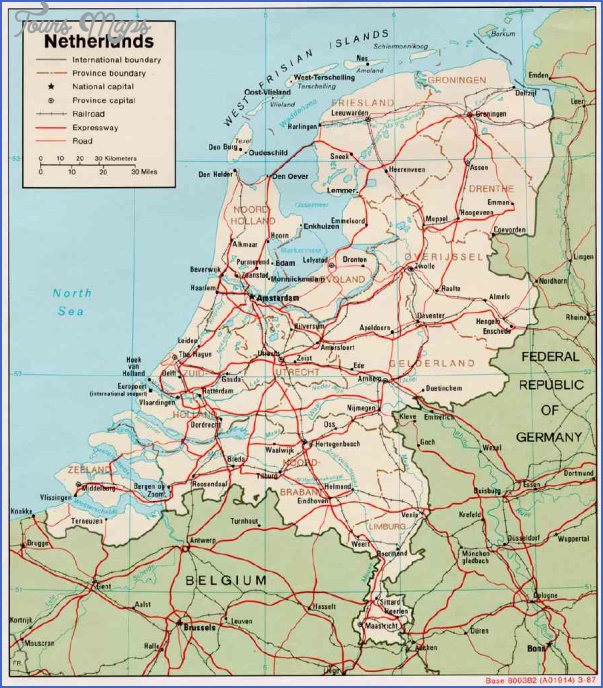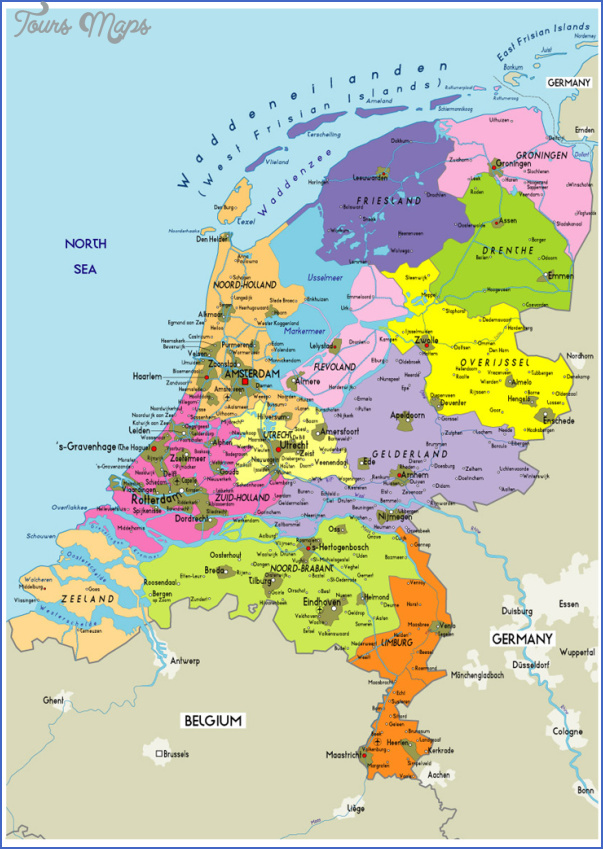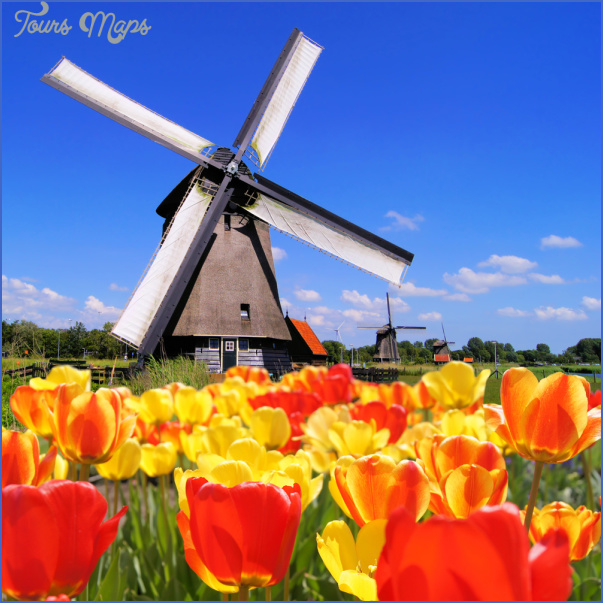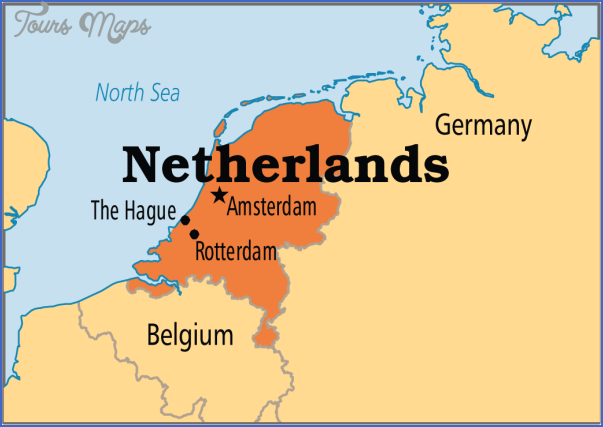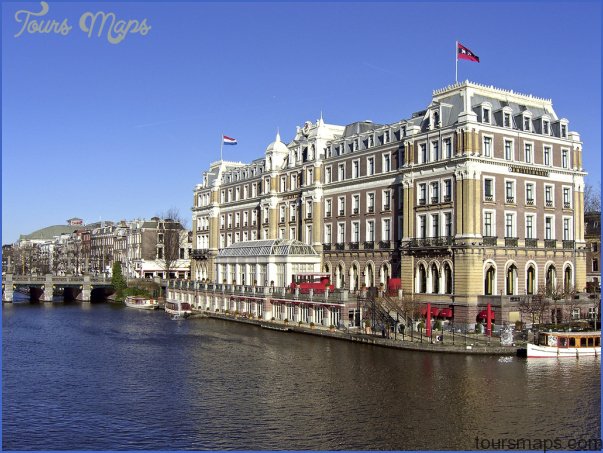Officially Holland is called The Netherlands. Holland was the largest Dutch Province and incorporated the country’s three largest and most prosperous cities: Amsterdam, The Hague and Rotterdam. The original Province is now divided into Noord-Holland and Suid-Holland. About the size of Maryland, The Netherlands is low and flat, which makes for great bicycling. The North Sea gives the country a mild, damp climate. The North Sea has also given Holland much of its land. Rather, the Dutch have taken the land away from the North Sea by enclosing sections of the sea with dikes, pumping the water into the sea, thereby adding land. A fifth of Holland’s acreage is still under water. A Dutch motto goes: God made the world with the exception of Holland, which was made by the Dutch.
Originally the water was pumped out by windmill, which became a tourist trademark. A century ago about eleven thousand windmills were at work; now the figure is close to nine hundred fifty, of which three hundred are still used for a variety of agricultural and com-merical purposes. Each windmill has two doors for a reason. The vanes are constructed to be rotated 360 degrees to catch the wind from any direction. A person entering the mill took the door that was safe from the rotating vanes. Today some of the old windmills have been turned into cozy, round homes.
Coming into Holland by air the visitor usually lands at Amsterdam’s international airport, Schiphol. Amsterdam, like Stockholm, is a city of islands ninety islands, forty canals and four hundred bridges. It is an interesting city to explore. The canals, not streets, set the pattern. They carry visitors and residents on a variety of watercraft. Narrated tours, including a dinner cruise, travel over a large part of the city. Efficient trolleys are another travel choice, moving along the major avenues, crossing canals and connecting main squares. Amsterdam is the constitutional capital of the country; The Hague is its de facto capital.
The Hague, home of the Queen, and the Binnerhof, the complex of medieval buildings where Parliament meets, is thirty-four minutes away from the airport by trains that depart every half hour. The Hague is a music-loving city with weekend concerts, numerous jazz cafes and theaters that offer ballet, opera, and chamber music.
Trains also run every half hour between The Hague and Amsterdam, fifty-five minutes apart. A brief bus or train ride from The Hague is Scheveningen (skay-vuh-ningen), Holland’s version of Atlantic City. On the North Sea, Scheveningen had been a popular seaside resort town, then began to deteriorate. In 1973 the Hague Town Council began a ten-year redevelopment plan. The Kurhaus (cure house), the landmark hotel, was rebuilt into a luxury hotel that includes a casino.
No swimming in the North Sea unless you are interested in joining the Polar Bear Club. The water is frigid and polluted. Even so, in the summer the beaches are crammed with cabanas. The air is bracing. A week of continuous sunshine is a novelty. Dutch sun worshipers ship out to the south of France and to Spain. Summer temperatures seldom exceed seventy-five degrees. The winters are long and damp. The weather in The Netherlands, as in England, is a major topic of conversation.
The Dutch are very much interested in food. Heavy breakfasts of bread, meat, eggs, fruit are similar to those in Denmark. Holland is known for its dairy products and because
Think of Holland and you think of waterways, dikes, and windmills.
Source: Netherlands National Tourist Office.
Its long association with Indonesia (formerly the Dutch East Indies) includes the traditional rice table, the rijsttafel, and curried dishes.
The Dutch have a reputation for cleanliness, so much so that a cleanser powder, Old Dutch Cleanser, was named after them. They are also known to be very tolerant. For several years counter-culture groups parked themselves in one of Amsterdam’s squares, openly took drugs and carried on in ways few other cities would have tolerated. After a time even the Dutch had enough and moved them out. Tolerance for German visitors is also strained because of memories of the occupation of The Netherlands by the Germans during World Wars I and II.
Literacy, learning and languages are prized in the Dutch culture. Nearly every Dutch person speaks English. Many are familiar with other languages as well as their Dutch language. The Dutch are music lovers; The Amsterdam Concertgebouw orchestra and the resident philharmonic orchestras in The Hague and in Rotterdam are often featured in fine recordings. Their public gardens also rank among the best in the world.
THE NETHERLANDS Photo Gallery
Maybe You Like Them Too
- Explore Blavozy, France with this detailed map
- Explore East Lindfield, Australia with this detailed map
- Explore Bonferraro, Italy with this detailed map
- Explore Doncaster, United Kingdom with this detailed map
- Explore Arroyito, Argentina with this Detailed Map

